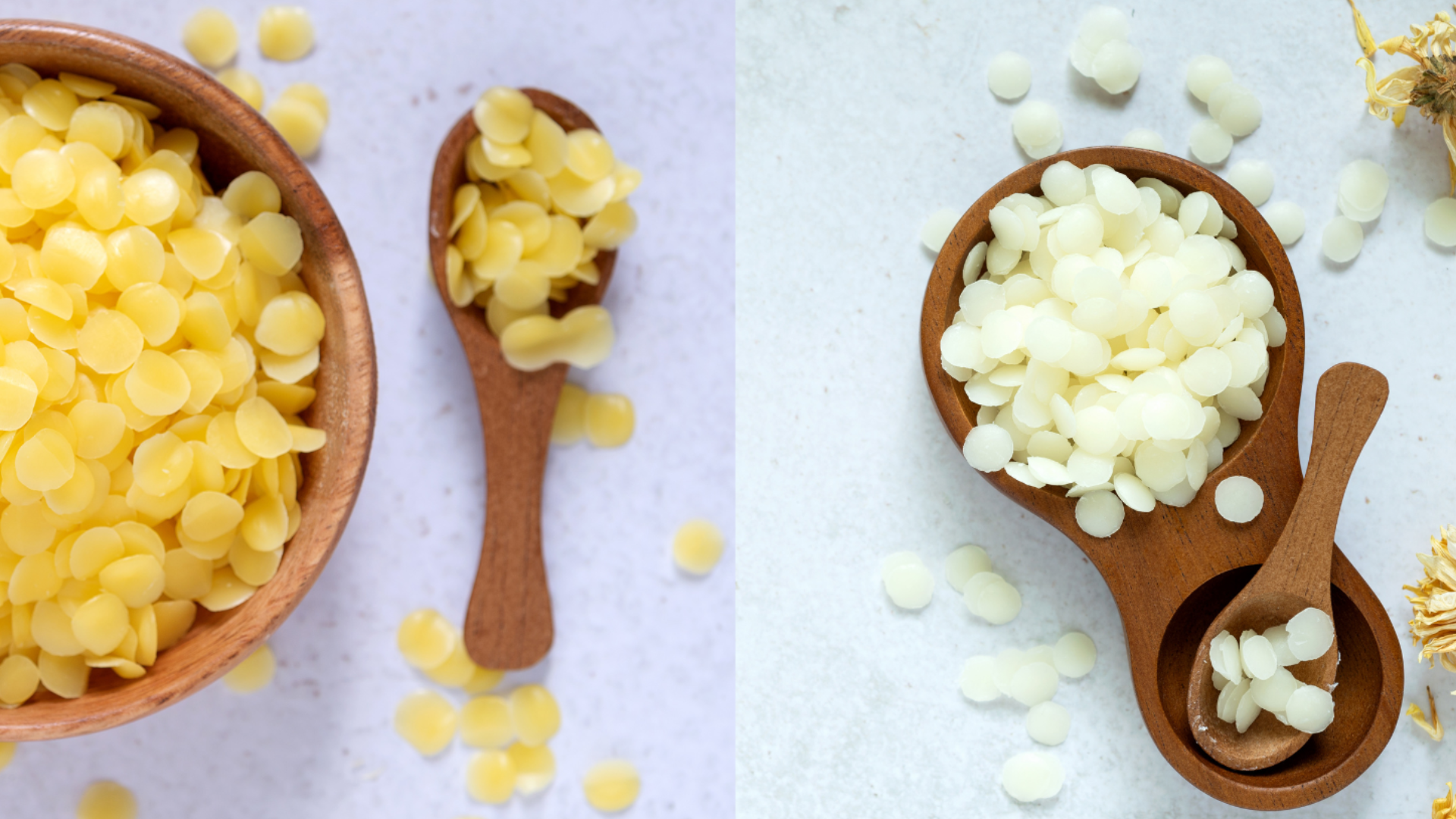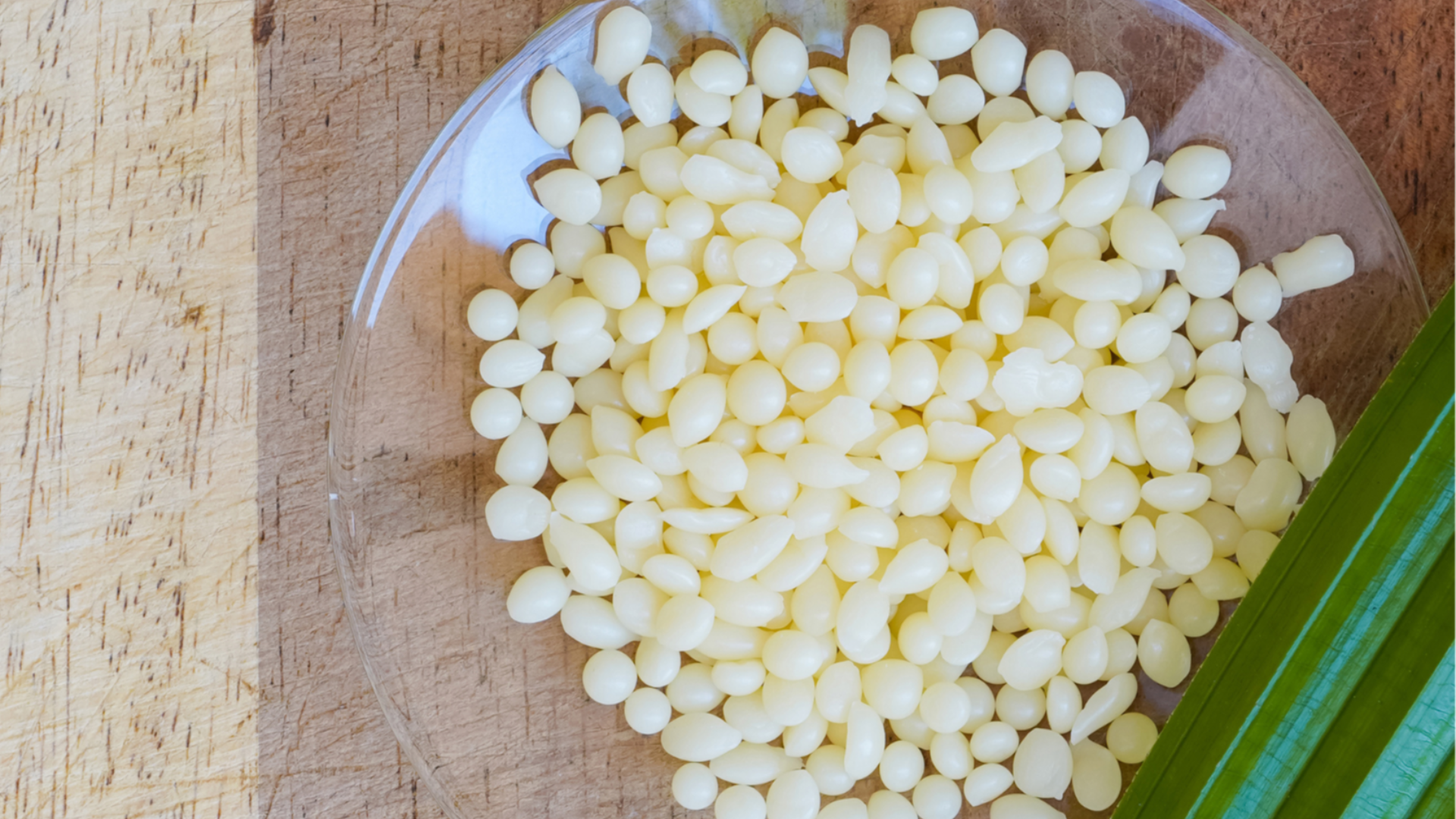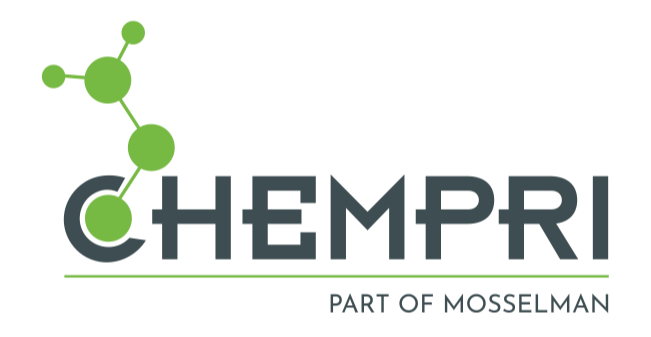
Insights
Oleochemicals - Waxes indispensable for daily maintenance products
Cosmetics, lip balm, petroleum jelly, shoe polish and wine gums: did you know that different types of waxes are used in these products? At Chempri, we (among others) sell beeswax, candelilla wax, carnauba wax and paraffin. These four waxes can be connected, combined and interchanged. You don't know what waxes are exactly? Or you have no idea what products these waxes can be used for? Then keep on reading! In this article, we are going to talk about various waxes we offer at Chempri.
What are waxes?
By waxes, we mean a group of fatty substances that melt into a liquid slightly above 40 °C (104 °F). These waxes are often malleable and they have a high melting point. Waxes are therefore often used in maintenance products such as floor polish, protection such as Vaseline, but also as fuel for candles and for example, for waxing your surfboard!

Where does beeswax come from?
Beeswax is made by certain species of bees. When bees want to store honey in a hive, the bees need combs. The bees build the combs out of beeswax. When the combs are built, they fill them with honey. Beeswax is a solid substance with a fairly high melting point between 62 and 65 °C. Furthermore, it consists mainly of esters of fatty acids with long-chain fatty alcohols. This is different to fats which consist mainly of glycerol esters.
Did you know that beeswax has been used for centuries? In the Stone Age, beeswax was used to fill teeth. When beeswax is soft enough, you can fill a tooth with it. Furthermore, the Vikings used beeswax very often, to seal the holes in their wooden ships for example. It was discovered in the Middle Ages that you can also use beeswax to make candles. Previously, animal fat was used for this purpose, but the smell released in the process was unpleasant. As a result, a candle made from beeswax was very popular.
What is beeswax used for?
Our waxes can be used in endless combinations, but when is it the best choice to use beeswax? Beeswax is used for many purposes, including making candles, creams and other cosmetics. It is also used as a binder in painting, as well as a glazing agent in licorice! For our skin and hair, beeswax also has special benefits. For example, beeswax contains vitamin A. Vitamin A contains moisturizing components. These components help your skin retain moisture, keeping your skin young and firm. Beeswax also helps against external irritants. It acts as a kind of protective layer when applied to the skin. So in extreme weather conditions, beeswax can give your skin extra protection.
Beeswax also has many benefits for the hair. In fact, the esters, fatty acids and vitamin A in beeswax contain anti-inflammatory properties that deeply nourish the scalp and hair follicles. As a result, beeswax can promote hair growth. In addition, beeswax can also prevent hair loss. This is because beeswax manages to retain moisture in the hair and nourishes the hair. Thus, it is an ideal moisturizer for your hair.
How is Candelilla wax made?
Candelilla wax is extracted from the leaves of the small Candelilla bush found in northern Mexico and the southwestern United States. Candelilla wax is yellow-brown, hard, brittle, aromatic and opaque to translucent. Furthermore, candelilla wax contains many nutrients and it functions excellently as a binder in cosmetics. As mentioned earlier, waxes can substitute for each other. Candelilla wax can be an excellent alternative to beeswax in cosmetics.

How is Candellila wax used?
Candellila wax is usually mixed with other waxes and then used to harden them without raising their melting point. It can also provide a vegetable alternative to the beeswax mentioned earlier, or provide a natural alternative to kerosene wax. Candelilla wax contains predominantly high levels of saturated hydrocarbons and wax esters. Because of this, candelilla wax contributes to smooth skin, restores the lipid balance of your skin and is great for caring for your lips. You will therefore find it mainly in lotions and lip balm.

Where is carnauba wax derived from?
Carnauba wax is a vegetable wax derived from the leaves of the carnauba palm. This palm is also called the Copernica Cerifera. The carnauba palm secedes wax through its leaves, which protects the tree from damaging sun rays or preventing it from drying out. The carnauba palm is mainly found in Brazil in South America.
What is carnauba wax used for?
Carnauba wax in particular is often mixed with yet another well-known wax, namely beeswax. We have highlighted this earlier in this article. Furthermore, carnauba wax is very versatile because it has many different properties. For example, it has a shiny appearance and is therefore widely used in polishes. Think of shoe polish, car wax, but also wine gums in the food industry and the coating of tablets in the pharmaceutical industry. Furthermore, carnauba wax, like the candalilla wax highlighted above, is also often found in cosmetics. Its high melting point makes it very suitable for use in lipstick, foundation and other make-up products.
What is paraffin?
Paraffin is a mineral oil made from petroleum. After a treatment process, you can incorporate kerosene into candle wax or cosmetic products such as creams and ointments. Thus, kerosene has moisturizing and protective properties. Therefore, you should apply it on dry skin.

How does paraffin work?
The molecules of paraffin are so large that they cannot penetrate into the skin. In this way, the skin is sealed, blood flow increases and no moisture is lost. The result? The skin stays hydrated and feels soft. This explains why paraffin is a good solution for dry skin and eczema. This is because when the pores are open, the skin is more sensitive to external influences. For example, dry skin usually occurs in winter, when the heating is on full blast and the air is dry. This can be accompanied by itching, flaking, cracking and burning. These symptoms occur mainly on the shins, thighs, upper arms and hips. Applying a cream containing paraffin once or twice a day keeps the skin supple and provides maximum protection. The symptoms usually diminish after a few days. Some beauty salons even offer in-depth paraffin treatments for the hands and/or feet.
Petroleum jelly: miracle cure made with with paraffin
We love using it as skin care, but today we'd like to surprise you with 3 uses you might not have immediately thought about with petroleum jelly.
- As protective coating
You probably know that you should not leave your handyman equipment outside, or in damp places, because it can rust. However, with some machines or equipment with metal surfaces, it is simply not possible to keep them completely moisture-free. This is when petroleum jelly offers the solution! In fact, by lubricating the surface with petroleum jelly, you can protect it from rust. - To avoid the cold
Traditionally, petroleum jelly has been used against the extreme cold. This is because it acts like a wall. It keeps the cold out and the heat in. But to use petroleum jelly as skaters did during the Elfstedentocht, all over your body while exercising, is not advised. This is because it is important that sweat can leave your body. However, it is very good for protecting your pets' paws in the snow or on your lips during winter sports! - For medical purposes
Petroleum jelly is also widely used in the medical field. To protect equipment from rust and bacteria, but also as a lubricant on equipment. In addition, petroleum jelly has an important role in patients who have been put under anesthesia or patients who have been put into or fallen into a coma. Here, petroleum jelly is applied to the lips to keep them greasy.
Are waxes dangerous?
Different studies offer different outcomes to this question. We can draw certain conclusions. Studies show that beeswax only has positive effects. In fact, beeswax contains vitamin A and it acts as a care for your skin and hair. It can even prevent skin irritations and hair loss. Furthermore, beeswax is used in cosmetics, glazing agent and binding agent. However, beeswax is not vegan. It is created from the animal fats of a bee, making it a non vegan product.
Candelilla wax also has several positive effects. Namely, it is predominantly high in saturated hydrocarbons and wax esters. As a result, candelilla wax contributes to smooth skin, restores the lipid balance of your skin and is great for caring for your lips. You will therefore find it mostly in lotions and lip balm. Candelilla wax also contains many nutrients.
Candelilla wax, this is an excellent alternative to beeswax. It is a vegan product, which is why it is especially widely used for vegan candy. Furthermore, the wax has no harmful health effects and no other substances are used in it.
Similar to the beeswax, the carnauba wax works as a protector for many products.
Finally, paraffin is used in candle wax, for example, as well as various cosmetics. The best-known cosmetic product in which paraffin is incorporated is petroleum jelly. Petroleum jelly has a protective effect for the skin, works well against the cold and can be used for medical purposes. But it is also true that petroleum jelly contributes to clogging pores and sebaceous glands. In fact, if your skin is prone to acne and blackheads, petroleum jelly can have a stimulating effect.
Are you interested in any of our products? Get in touch and see what we can do for you!

